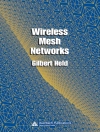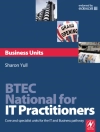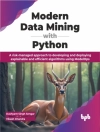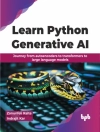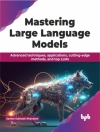AMBIENT INTELLIGENCE AND INTERNET OF THINGS
The book explores long-term implementation techniques and research paths of ambient intelligence and the Internet of Things that meet the design and application requirements of a variety of modern and real-time applications.
Working environments based on the emerging technologies of ambient intelligence (Am I) and the Internet of Things (Io T) are available for current and future use in the diverse field of applications. The Am I and Io T paradigms aim to help people achieve their daily goals by augmenting physical environments using networks of distributed devices, including sensors, actuators, and computational resources. Because Am I-Io T is the convergence of numerous technologies and associated research fields, it takes significant effort to integrate them to make our lives easier. It is asserted that Am I can successfully analyze the vast amounts of contextual data obtained from such embedded sensors by employing a variety of artificial intelligence (AI) techniques and that it will transparently and proactively change the environment to conform to the requirements of the user. Over time, the long-term research goals and implementation strategies could meet the design and application needs of a wide range of modern and real-time applications.
The 13 chapters in Ambient Intelligence and Internet of Things: Convergent Technologies provide a comprehensive knowledge of the fundamental structure of innovative cutting-edge Am I and Io T technologies as well as practical applications.
Audience
The book will appeal to researchers, industry engineers, and students in artificial and ambient intelligence, the Internet of Things, intelligent systems, electronics and communication, electronics instrumentations, and computer science.
Innehållsförteckning
Preface xv
1 Ambient Intelligence and Internet of Things: An Overview 1
Md Rashid Mahmood, Harpreet Kaur, Manpreet Kaur, Rohit Raja and Imran Ahmed Khan
1.1 Introduction 2
1.2 Ambient Intelligent System 5
1.3 Characteristics of Am I Systems 6
1.4 Driving Force for Ambient Computing 9
1.5 Ambient Intelligence Contributing Technologies 9
1.6 Architecture Overview 11
1.7 The Internet of Things 14
1.8 Io T as the New Revolution 14
1.9 Io T Challenges 16
1.10 Role of Artificial Intelligence in the Internet of Things (Io T) 18
1.11 Io T in Various Domains 19
1.12 Healthcare 20
1.13 Home Automation 20
1.14 Smart City 21
1.15 Security 21
1.16 Industry 22
1.17 Education 23
1.18 Agriculture 24
1.19 Tourism 26
1.20 Environment Monitoring 27
1.21 Manufacturing and Retail 28
1.22 Logistics 28
1.23 Conclusion 29
References 29
2 An Overview of Internet of Things Related Protocols, Technologies, Challenges and Application 33
Deevesh Chaudhary and Prakash Chandra Sharma
2.1 Introduction 34
2.1.1 History of Io T 35
2.1.2 Definition of Io T 36
2.1.3 Characteristics of Io T 36
2.2 Messaging Protocols 37
2.2.1 Constrained Application Protocol 38
2.2.2 Message Queue Telemetry Transport 39
2.2.3 Extensible Messaging and Presence Protocol 41
2.2.4 Advance Message Queuing Protocol (AMQP) 41
2.3 Enabling Technologies 41
2.3.1 Wireless Sensor Network 41
2.3.2 Cloud Computing 42
2.3.3 Big Data Analytics 43
2.3.4 Embedded System 43
2.4 Io T Architecture 44
2.5 Applications Area 46
2.6 Challenges and Security Issues 49
2.7 Conclusion 50
References 51
3 Ambient Intelligence Health Services Using Io T 53
Pawan Whig, Ketan Gupta, Nasmin Jiwani and Arun Velu
3.1 Introduction 54
3.2 Background of AML 55
3.2.1 What is AML? 55
3.3 Am I Future 58
3.4 Applications of Ambient Intelligence 60
3.4.1 Transforming Hospitals and Enhancing Patient Care With the Help of Ambient Intelligence 60
3.4.2 With Technology, Life After the COVID-19 Pandemic 61
3.5 Covid-19 63
3.5.1 Prevention 64
3.5.2 Symptoms 64
3.6 Coronavirus Worldwide 65
3.7 Proposed Framework for COVID- 19 67
3.8 Hardware and Software 69
3.8.1 Hardware 69
3.8.2 Heartbeat Sensor 70
3.8.3 Principle 70
3.8.4 Working 70
3.8.5 Temperature Sensor 71
3.8.6 Principle 71
3.8.7 Working 71
3.8.8 BP Sensor 72
3.8.9 Principle 72
3.8.10 Working 72
3.9 Mini Breadboard 73
3.10 Node MCU 73
3.11 Advantages 76
3.12 Conclusion 76
References 76
4 Security in Ambient Intelligence and Internet of Things 81
Salman Arafath Mohammed and Md Rashid Mahmood
4.1 Introduction 82
4.2 Research Areas 84
4.3 Security Threats and Requirements 84
4.3.1 Ad Hoc Network Security Threats and Requirements 85
4.3.1.1 Availability 86
4.3.1.2 Confidentiality 86
4.3.1.3 Integrity 86
4.3.1.4 Key Management and Authorization 86
4.3.2 Security Threats and Requirements Due to Sensing Capability in the Network 87
4.3.2.1 Availability 87
4.3.2.2 Confidentiality 87
4.3.2.3 Integrity 87
4.3.2.4 Key Distribution and Management 87
4.3.2.5 Resilience to Node Capture 88
4.3.3 Security Threats and Requirements in Am I and Io T Based on Sensor Network 88
4.3.3.1 Availability 88
4.3.3.2 Confidentiality 89
4.3.3.3 Confidentiality of Location 89
4.3.3.4 Integrity 89
4.3.3.5 Nonrepudiation 90
4.3.3.6 Fabrication 90
4.3.3.7 Intrusion Detection 90
4.3.3.8 Confidentiality 91
4.3.3.9 Trust Management 92
4.4 Security Threats in Existing Routing Protocols that are Designed With No Focus on Security in Am I and Io T Based on Sensor Networks 92
4.4.1 Infrastructureless 94
4.4.1.1 Dissemination-Based Routing 94
4.4.1.2 Context-Based Routing 98
4.4.2 Infrastructure-Based 99
4.4.2.1 Network with Fixed Infrastructure 100
4.4.2.2 New Routing Strategy for Wireless Sensor Networks to Ensure Source Location Privacy 100
4.5 Protocols Designed for Security Keeping Focus on Security at Design Time for Am I and Io T Based on Sensor Network 101
4.5.1 Secure Routing Algorithms 101
4.5.1.1 Identity-Based Encryption (I.B.E.) Scheme 101
4.5.1.2 Policy-Based Cryptography and Public Encryption with Keyword Search 102
4.5.1.3 Secure Content-Based Routing 102
4.5.1.4 Secure Content-Based Routing Using Local Key Management Scheme 103
4.5.1.5 Trust Framework Using Mobile Traces 103
4.5.1.6 Policy-Based Authority Evaluation Scheme 103
4.5.1.7 Optimized Millionaire’s Problem 104
4.5.1.8 Security in Military Operations 104
4.5.1.9 A Security Framework Application Based on Wireless Sensor Networks 104
4.5.1.10 Trust Evaluation Using Multifactor Method 105
4.5.1.11 Prevention of Spoofing Attacks 105
4.5.1.12 Qo S Routing Protocol 106
4.5.1.13 Network Security Virtualization 106
4.5.2 Comparison of Routing Algorithms and Impact on Security 106
4.5.3 Inducing Intelligence in Io T Networks Using Artificial Intelligence 111
4.5.3.1 Fuzzy Logic- 1 111
4.5.3.2 Fuzzy Logic- 2 112
4.6 Introducing Hybrid Model in Military Application for Enhanced Security 113
4.6.1 Overall System Architecture 114
4.6.2 Best Candidate Selection 114
4.6.3 Simulation Results in Omnet++ 115
4.6 Conclusion 117
References 118
5 Futuristic AI Convergence of Megatrends: Io T and Cloud Computing 125
Chanki Pandey, Yogesh Kumar Sahu, Nithiyananthan Kannan, Md Rashid Mahmood, Prabira Kumar Sethy and Santi Kumari Behera
5.1 Introduction 126
5.1.1 Our Contribution 128
5.2 Methodology 129
5.2.1 Statistical Information 130
5.3 Artificial Intelligence of Things 131
5.3.1 Application Areas of Io T Technologies 132
5.3.1.1 Energy Management 132
5.3.1.2 5G/Wireless Systems 134
5.3.1.3 Risk Assessment 136
5.3.1.4 Smart City 138
5.3.1.5 Health Sectors 139
5.4 AI Transforming Cloud Computing 140
5.4.1 Application Areas of Cloud Computing 152
5.4.2 Energy/Resource Management 154
5.4.3 Edge Computing 155
5.4.4 Distributed Edge Computing and Edge-of-Things (Eo T) 158
5.4.5 Fog Computing in Cloud Computing 158
5.4.6 Soft Computing and Others 161
5.5 Conclusion 174
References 174
6 Analysis of Internet of Things Acceptance Dimensions in Hospitals 189
Subhodeep Mukherjee, Manish Mohan Baral, Venkataiah Chittipaka and Sharad Chandra Srivastava
6.1 Introduction 190
6.2 Literature Review 191
6.2.1 Overview of Internet of Things 191
6.2.2 Internet of Things in Healthcare 191
6.2.3 Research Hypothesis 193
6.2.3.1 Technological Context (TC) 193
6.2.3.2 Organizational Context (OC) 194
6.2.3.3 Environmental Concerns (EC) 195
6.3 Research Methodology 195
6.3.1 Demographics of the Respondents 196
6.4 Data Analysis 196
6.4.1 Reliability and Validity 196
6.4.1.1 Cronbach’s Alpha 196
6.4.1.2 Composite Reliability 201
6.4.2 Exploratory Factor Analysis (EFA) 201
6.4.3 Confirmatory Factor Analysis Results 201
6.4.3.1 Divergent or Discriminant Validity 204
6.4.4 Structural Equation Modeling 205
6.5 Discussion 206
6.5.1 Technological Context 206
6.5.2 Organizational Context 207
6.5.3 Environmental Context 208
6.6 Conclusion 209
References 209
7 Role of Io T in Sustainable Healthcare Systems 215
Amrita Rai, Ritesh Pratap Singh and Neha Jain
7.1 Introduction 216
7.2 Basic Structure of Io T Implementation in the Healthcare Field 217
7.3 Different Technologies of Io T for the Healthcare Systems 221
7.3.1 On the Basis of the Node Identification 223
7.3.2 On the Basis of the Communication Method 223
7.3.3 Depending on the Location of the Object 224
7.4 Applications and Examples of Io T in the Healthcare Systems 225
7.4.1 Io T-Based Healthcare System to Encounter COVID-19 Pandemic Situations 225
7.4.2 Wearable Devices 226
7.4.3 Io T-Enabled Patient Monitoring Devices From Remote Locations 227
7.4.3.1 Pulse Rate Sensor 227
7.4.3.2 Respiratory Rate Sensors 229
7.4.3.3 Body Temperature Sensors 231
7.4.3.4 Blood Pressure Sensing 232
7.4.3.5 Pulse Oximetry Sensors 233
7.5 Companies Associated With Io T and Healthcare Sector Worldwide 234
7.6 Conclusion and Future Enhancement in the Healthcare System With Io T 237
References 238
8 Fog Computing Paradigm for Internet of Things Applications 243
Upendra Verma and Diwakar Bhardwaj
8.1 Introduction 243
8.2 Challenges 247
8.3 Fog Computing: The Emerging Era of Computing Paradigm 248
8.3.1 Definition of Fog Computing 248
8.3.2 Fog Computing Characteristic 249
8.3.3 Comparison Between Cloud and Fog Computing Paradigm 250
8.3.4 When to Use Fog Computing 250
8.3.5 Fog Computing Architecture for Internet of Things 251
8.3.6 Fog Assistance to Address the New Io T Challenges 252
8.3.7 Devices Play a Role of Fog Computing Node 253
8.4 Related Work 254
8.5 Fog Computing Challenges 254
8.6 Fog Supported Io T Applications 262
8.7 Summary and Conclusion 265
References 265
9 Application of Internet of Things in Marketing Management 273
Arshi Naim, Anandhavalli Muniasamy and Hamed Alqahtani
9.1 Introduction 273
9.2 Literature Review 275
9.2.1 Customer Relationship Management 276
9.2.2 Product Life Cycle (PLC) 277
9.2.3 Business Process Management (BPM) 278
9.2.4 Ambient Intelligence (Am I) 279
9.2.5 Io T and CRM Integration 280
9.2.6 Io T and BPM Integration 280
9.2.7 Io T and Product Life Cycle 282
9.2.8 Io T in MMgnt 282
9.2.9 Impacts of Am I on Marketing Paradigms 283
9.3 Research Methodology 284
9.4 Discussion 284
9.4.1 Research Proposition 1 288
9.4.2 Research Proposition 2 290
9.4.3 Research Proposition 3 291
9.4.4 Research Proposition 4 294
9.4.5 Research Proposition 5 294
9.5 Results 295
9.4 Conclusions 296
References 297
10 Healthcare Internet of Things: A New Revolution 301
Manpreet Kaur, M. Sugadev, Harpreet Kaur, Md Rashid Mahmood and Vikas Maheshwari
10.1 Introduction 302
10.2 Healthcare Io T Architecture (Io T) 303
10.3 Healthcare Io T Technologies 304
10.3.1 Technology for Identification 305
10.3.2 Location Technology 306
10.3.2.1 Mobile-Based Io T 306
10.3.2.2 Wearable Devices 308
10.3.2.3 Ambient-Assisted Living (AAL) 314
10.3.3 Communicative Systems 315
10.3.3.1 Radiofrequency Identification 316
10.3.3.2 Bluetooth 316
10.3.3.3 Zigbee 317
10.3.3.4 Near Field Communication 317
10.3.3.5 Wireless Fidelity (Wi-Fi) 318
10.3.3.6 Satellite Communication 318
10.4 Community-Based Healthcare Services 319
10.5 Cognitive Computation 321
10.6 Adverse Drug Reaction 323
10.7 Blockchain 325
10.8 Child Health Information 327
10.9 Growth in Healthcare Io T 328
10.10 Benefits of Io T in Healthcare 328
10.11 Conclusion 329
References 330
11 Detection-Based Visual Object Tracking Based on Enhanced YOLO-Lite and LSTM 339
Aayushi Gautam and Sukhwinder Singh
11.1 Introduction 340
11.2 Related Work 341
11.3 Proposed Approach 343
11.3.1 Enhanced YOLO-Lite 344
11.3.2 Long Short-Term Memory 346
11.3.3 Working of Proposed Framework 347
11.4 Evaluation Metrics 349
11.5 Experimental Results and Discussion 350
11.5.1 Implementation Details 350
11.5.2 Performance on OTB-2015 350
11.5.3 Performance on VOT-2016 353
11.5.4 Performance on UAV-123 354
11.6 Conclusion 356
References 356
12 Introduction to Am I and Io T 361
Dolly Thankachan
12.1 Introduction 362
12.1.1 Am I and Io T Characteristics and Definition of Overlaps 362
12.1.1.1 Perceptions of “Am I” and the “Io T” 363
12.1.2 Prospects and Perils of Am I and the Io T 364
12.1.2.1 Assistances and Claim Areas 364
12.1.2.2 Intimidations and Contests Relating to Am I and the Io T 365
12.2 Am I and the Io T and Environmental and Societal Sustainability: Dangers, Challenges, and Underpinnings 366
12.3 Role of Am I and the Io T as New I.C.T.s to Conservational and Social Sustainability 367
12.3.1 Am I and the Io T for Environmental Sustainability: Issues, Discernment, and Favoritisms in Tactical Innovation Pursuits 368
12.4 The Environmental Influences of Am I and the Io T Technology 369
12.4.1 Fundamental Properties 370
12.4.2 Boom Properties 370
12.4.3 Oblique Outcomes 371
12.4.4 Straight Outcome 372
12.5 Conclusion 374
References 379
13 Design of Optimum Construction Site Management Architecture: A Quality Perspective Using Machine Learning Approach 383
Kundan Meshram
13.1 Introduction 384
13.2 Literature Review 386
13.3 Proposed Construction Management Model Based on Machine Learning 390
13.4 Comparative Analysis 393
13.5 Conclusion 395
References 396
Index 399
Om författaren
Md Rashid Mahmood, Ph D, is a professor in the Department of Electronics and Communication Engineering, Guru Nanak Institutions Technical Campus, Hyderabad, India. He has published 50 research papers in international/national journals as well as 10 patents.
Rohit Raja, Ph D, is an associate professor & Head, IT Department, Guru Ghasidas, Vishwavidyalaya, Bilaspur, (CG), India. He has published 80 research papers in international/national journals as well as 13 patents.
Harpreet Kaur, Ph D, is an associate professor in the Department of Electronics and Communication Engineering, Guru Nanak Institutions Technical Campus, Hyderabad, India. Her research interests include vehicle detection and tracking in autonomous vehicles, and image processing.
Sandeep Kumar, Ph D, is a professor in the Department of Computer Science and Engineering, Koneru Lakshmaiah Education Foundation, Vaddeswaram, AP, India. He has published 85 research papers in international/national journals as well as 9 patents.
Kapil Kumar Nagwanshi, Ph D, is an associate professor at So S E&T, Guru Ghasidas Vishwavidyalaya, Bilaspur, India. He has published more the 25 articles in SCI and Scopus-indexed Journals, and six patents were granted. His area of interest includes AI-ML, computer vision, and Io T.




